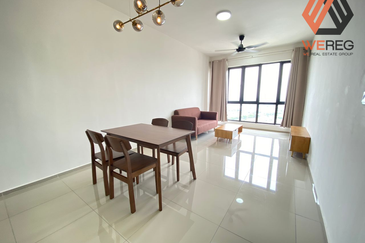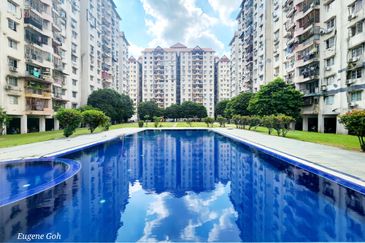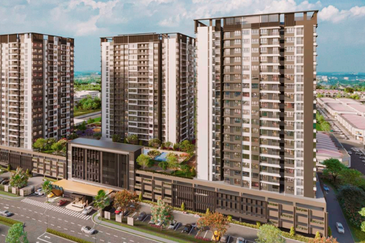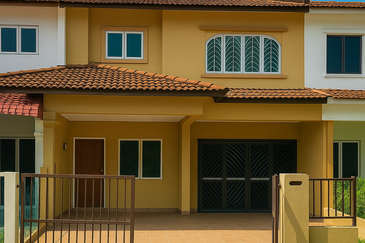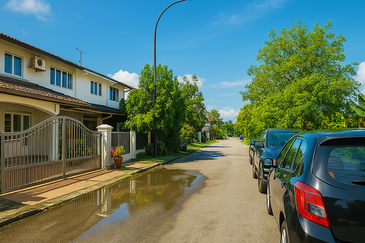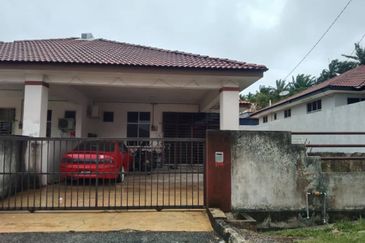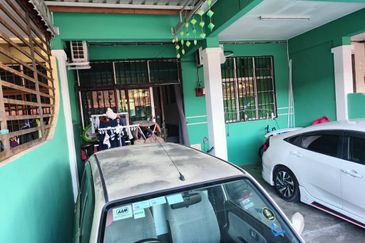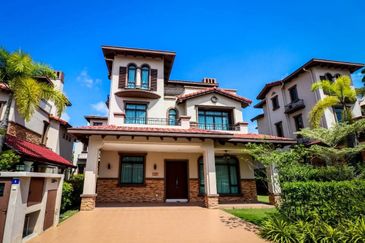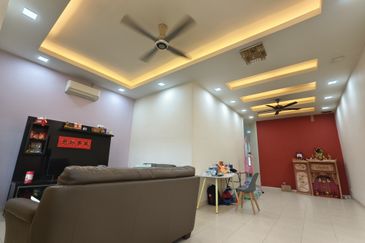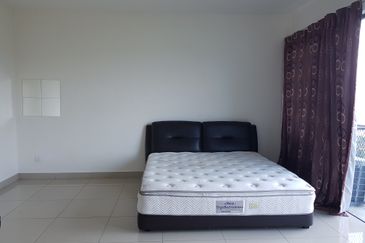Guidance note on ventilation and indoor air quality (IAQ) for public area during Covid-19 pandemic by Ministry of Human Resources Malaysia and Ministry of Health
1.0 Introduction
The Covid-19 pandemic has influenced the lifestyle and approach of people to their surroundings. Generally, public space is defined as space to which people normally have unrestricted access and right of way. In other words, public places and spaces are public because anyone is entitled to be physically present in them.
Covid-19 is mainly transmitted by close contact and respiratory droplets which are released when an infected person coughs, sneezes, talks, or sings. It can also be spread through virus aerosols in the air under certain settings, such as enclosed environments which are poorly ventilated. Hence, it is critical to mitigate this risk by improving ventilation and air quality in indoor environments.
The design, materials used and management and maintenance of public space is a key in fighting the spread of the Covid 19 virus. Public space should be designed to allow for adequate air circulation.
Objective of this guidance is to guide public on improving ventilation and indoor air quality at the public area to reduce the risk of airborne transmission. It should be accompanied with the latest Standard Operating Procedures (SOP) established by Majlis Keselamatan Negara (MKN) and other key measures to reduce disease transmission, such as requiring building occupants to practice physical distancing, wearing masks, frequently washing hand, and carrying out regular disinfection of high-touch points within the building.
This guidance is developed based on Industry Code of Practice (ICOP) on Indoor Air Quality 2010 published by Department of Occupational Safety and Health (DOSH) and other established documents published by respective international organization and other countries on ventilation and indoor air quality during Covid -19 pandemic.
This guidance applies to premises which have mechanical ventilating and air conditioning (MVAC) system, air conditioning system without fresh air supply and natural ventilation. This guidance is one of the best practices to be implemented by those who are involved in reducing the transmission of Covid -19 virus through airborne.
Read: Covid is airborne, scientists urge for ventilation system overhaul to combat the pandemic

2.0 Method to control
2.1 Engineering Controls
a) Increasing outside-air ventilation to the maximum practical;
b) Increasing air filtration by filtering the air that is re-circulated through the building to remove as many aerosol particles (i.e. very small particles containing the virus) as possible. Increasing air filtration may include upgrading HVAC filters to MERV 13 (or the highest MERV rating a building’s ventilation system can accommodate) and placing portable air cleaners in areas that are hard to ventilate with outside air or that have high density or occupancy;
Read: Act now before it’s too late - Poor indoor air ventilation kills
c) Adjusting or reconfiguring air flows to minimize indoor airborne transmission of the virus between people. This may include such measures as exhausting all restrooms directly to the outside and redirecting airflows so that they do not blow directly from person to person, if feasible.
2.2 Administrative Controls
a) Work practices designed to reduce crowding or occupancy such as telework, staggered schedules and remote/video meetings.
b) Limiting the use of small spaces that are shared, such as laundry rooms, and lobbies.
2.3 Reconfiguration of Building Spaces and Furnishings
When reconfiguring building spaces, the use of partitions can also help reduce risks of transmission by minimizing direct air flow between people. This is especially important when additional filtration and ventilation recommendations cannot be fully implemented.
2.4 Cleaning and Disinfection
a) Cleaning and disinfection is recommended in indoor community settings where there has been a suspected or confirmed case of COVID-19 within the last 24 hours.
b) If more than 24 hours have passed after there is suspected or confirmed case of Covid-19 in the working place, cleaning is enough unless there is high index transmission of infection in the area, presence susceptible individuals such as the elderly, persons with chronic diseases, and low compliance of wearing protective mask.
c) If more than three days have passed since a suspected or confirmed case of COVID-19 has been to a space, no additional cleaning than the usual cleaning is required.
d) The risk of transmission from surfaces can be reduced by wearing masks consistently and correctly, practicing hand hygiene, cleaning, and taking other measures to maintain healthy facilities.
Read: How do we prevent bad indoor air quality?
3.0 Measures for air-conditioned premises with mechanical ventilation air conditioning (MVAC)
3.1 Ensure MVAC system are fully functioning.
a) MVAC system must provide adequate ventilation to all occupied space.
b) Air Handling Unit (AHU) must be checked daily.
c) All supply air diffusers should operate at designated airflow direction.
d) Regularly maintain MVAC system by inspecting and cleaning supply and exhaust fan, check air ducts and damper for any leakages or blockages. Recommended maintenances frequencies are specified in ICOP IAQ 2010. During any maintenance’s activity, PPE should be worn accordingly.
e) Ensure there are no leakage of air into any occupied space. This is including water seals, cracks in any pipes or ducts and wall gaps. Any problem arise should be rectified as soon as possible.
Read: Urgent need on improving indoor air quality to fight Covid-19 – Dr Adeeba
3.2 Maximise ventilation for indoor air dilution: Maximise outdoor air intake and supply by setting
a) Ensure AHU and Fan Coil Unit (FCU) operate to maximum speed and capacity with all air dampers opened fully.
b) Demand control system which controls the reduction of outdoor fresh air supply should be turned off.
c) Optimal introduction off outdoor fresh air should be done by open all air dampers and do not block air ducts
d) Ensure all outdoor air reach all intended place by doing balancing of air distribution system.
e) Exhaust fans operate at full capacity to discharge air from indoor spaces. Keep windows and other openings around exhaust fans closed to avoid short-circuiting of air flow.
f) If existing system does not deliver sufficient outdoor air, and additional supply and/or exhaust fan should be installed.
g) Maximum room occupancy should be reduced if the MVAC system does not achieve the desired operational requirement.
3.3 Minimise indoor air recirculation; use high-efficiency filters in AHUs to treat recirculated air:
a) The recirculation air dampers should be set to a minimum.
b) Recirculated air should be treated by using high-efficiency filters (at least MERV13 is recommended). Maintenance and installation of filters should refer to manufacturers’ recommendation.
c) Avoid risk of carry-over leakage from exhaust air by switching off rotatory heat changers or heat recovery wheels.
4.0. Measures for naturally ventilated premises.
4.1 To improve ventilation, consider adding window or wall mounted exhaust fans.
a) Air supply and exhaust framework can be adjusted to generate one directional wind current in an inadequately or ineffectively ventilated space.
b) The exhaust system should generate at least the minimum air changes.
4.2 To improve air supply and increase ventilation rate
a) Add dedicated outdoor air supply or exhaust system
b) Expel air from the enclosed space by running exhaust fans at optimum capacity. To avoid short-circuiting of air flow, keep windows or other entryways closed.
c) Open windows and entryways as much as feasible, except if open air quality is poor. Air conditioners should be turned down or turned off when the windows or entryways are opened.
5.0 Measures for enclosed air-conditioned premises without mechanical ventilation provision (e.g. split-unit air-conditioners or FCUs without fresh air supply)
5.1 Increase ventilation and air exchange rate:
a) Operable windows and doors should be open as frequently as possible, unless outdoor air quality is poor. Air-conditioning should be reduced or turned off when doors and/or windows are opened.
b) A dedicated outdoor air supply and/exhaust can be added if necessary.
c) Expel air from the enclosed space by running exhaust fans at optimum capacity. To avoid short-circuiting of air flow, keep windows or other entryways closed.
5.2 Installing window-mounted exhaust fans:
a) Air supply and exhaust system can be aligned to provide uni-directional airflow in a poorly ventilated space.
5.3 In enclosed spaces with high risk of disease transmission, portable air cleaners for localised air cleaning may be considered as an interim measure:
a) Portable air cleaners should be equipped with high-efficiency air filters.
b) The number and size of portable air cleaner should be determined by using clean air delivery rate (CADR) or equivalent of a portable air purifier.
c) Portable air cleaner’s ozone generation function should be turned off to avoid exposure to excessive ozone levels and by-products, which may be hazardous to health, if present.
d) Above all this, any use of portable air cleaners should be considered an interim measure. Air cleaning does not replace the need for adequate ventilation. Regular surface cleaning and disinfection should also continue; as portable air cleaners do not remove surface contamination.
5.4 Ensure there are no leakage of air into any occupied space. This is including water seals, cracks in any pipes or ducts and wall gaps. Any problem arise should be rectified as soon as possible.
Read: Guidance note on ventilation and indoor air quality for residential properties
Read: Guidance note on ventilation and indoor air quality for non-residential properties
Read: Guidance note on ventilation and indoor air quality for healthcare facilities
Get the latest news @ www.EdgeProp.my
Subscribe to our Telegram channel for the latest stories and updates
TOP PICKS BY EDGEPROP
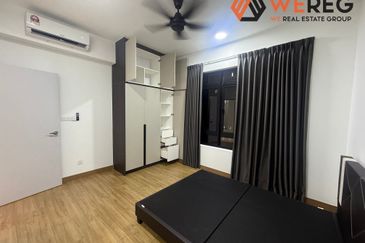
Amber Residence @ twentyfive.7
Kota Kemuning, Selangor
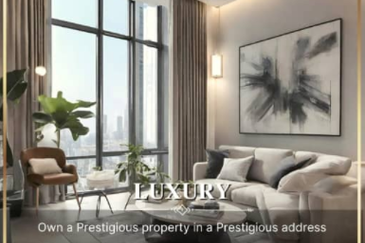
Pavilion Damansara Heights
Damansara Heights, Kuala Lumpur
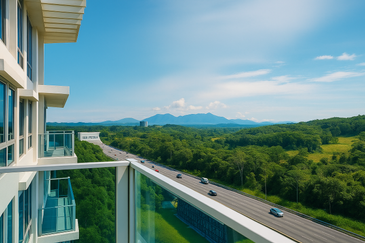
Apartment Putra 1 (Pangsapuri Putra 1)
Kajang, Selangor



